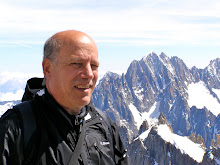It was 14 seconds I’ll never forget.
Twenty years ago, on Oct. 17, 1989, I was sitting at the San Jose Mercury News city desk, revved up to coordinate the news coverage of Game 3 of the Bay Area World Series between the Oakland Athletics and San Francisco Giants. As pre-game coverage clicked on at 5 p.m. our reporters were all in place. Four minutes later the TV went dead and newsroom’s concrete floor rippled like a ship’s wake.
We all dove. As I lay beneath my desk, legs protruding, I wondered whether the newsroom ceiling would collapse. The room rumbled, but I heard just one voice, that of another assistant city editor.
“Oh my God,” she said softly.
And then the wave stopped.
That night and in the months that followed, the staff at the San Jose Mercury News was at its best. The newspaper had had the foresight in the earthquake-prone San Francisco Bay Area to have a back-up generator. So we published the next morning. Reporters worked deep into the night, even as they worried about families unable to call in or homes sitting near the fault lines everyone in that part of the world can map in their mind. Darkness soon fell and on the blackened streets of San Francisco, fires burned. The Cypress Viaduct in Oakland had collapsed, killing dozens (the count kept changing). We began getting patchwork reports of devastation in the mountainous communities to the south of San Jose.
Late that night, the editors huddled around the news desk to debate the front page headline. They considered “The Big One,” then wisely discarded it. This quake, reported at 7.0 on the Richter Scale, didn’t approach the magnitude of the one that devastated San Francisco in 1906. I can’t recall what headline we actually did use. I can’t imagine readers much cared.
For weeks we worked 60, 70 and 80 hours. When the walls swayed – and they did often at first – we weren’t sure whether we were feeling aftershocks or fatigue signals from our overworked brains. First came the dramatic stories about the dead, the damage and the survivors, heroic rescues, odd and sometimes calamitous coincidences. Then came the long haul: rebuilding devastated homes and businesses, sorting through insurance claims and fraud, reviewing weaknesses in building structures, roadways and bridges.
Kathy and I seriously considered moving back East. For a half year I wouldn’t drive the long bridge expanse across the San Francisco Bay. For awhile, I didn’t stop beneath bridges either. But we stayed. At year’s end, the city desk staff turned from breaking news to a project “We Are Not Prepared,” to identify and push for changes in safety and engineering standards and emergency management systems.
Four month later our city desk staff won a Pulitzer for general news reporting. After the announcement, many of us took our soaking in the moat surrounding the paper as a badge of honor.
My family lived nearly five more years in the Bay Area. I got to participate in other big stories and projects. But none made me prouder to be in the news business or that particular news room than the months that followed the earthquake.
The paper’s Pulitzer made for some pretty gaudy icing, but that’s not why. Looking back on that day and the months that followed, what leaves me nostalgic is that the earthquake allowed us to help our neighbors and communities. It also forged a community in a once-proud newsroom that by all accounts today is a mere shell of itself. It wasn’t something any of us merely covered. It is something we lived and shared.
